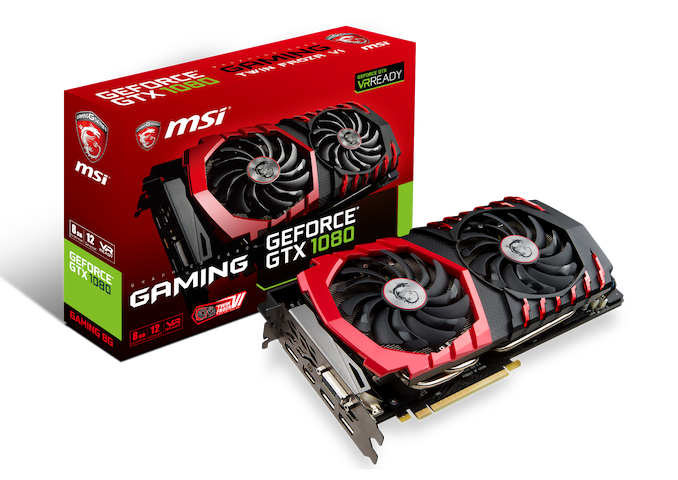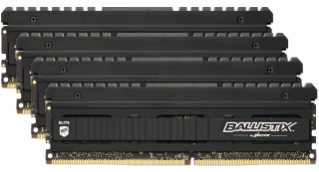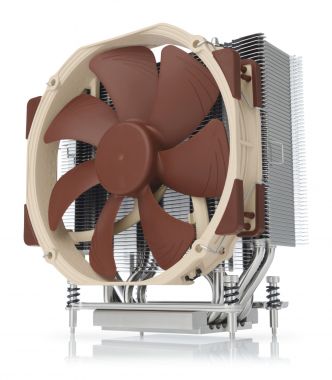The ASRock Z590 OC Formula Review: An Iconic Brand Revival
by Gavin Bonshor on September 10, 2021 9:00 AM ESTBoard Features
The ASRock Z590 OC Formula is an enthusiast-grade E-ATX motherboard primarily designed for extreme overclockers to push the boundaries of Intel's Rocket Lake and break world records. Although there are plenty of overclocking features such as an LN2 mode, specific LN2 overclocking profiles provided by Nick Shih, and others for gamers to use if they have an appropriate setup. The OC Formula has two memory slots with support for up to 64 GB of DDR4 memory, with advertised supported speeds of up to DDR4-6000 (OC).
ASRock includes plenty of PCIe 4.0 support including two full-length slots operating at x16 and x8/x8, with a third full-length slot electronically locked down to PCIe 3.0 x4, and two PCIe 2.0 x1 slots. For storage, the OC Formula has three M.2 slots, including one PCIe 4.0 x4 M.2 and two PCIe 3.0 x4 M.2 slots with both of these including support for SATA-based drives. Other storage options include eight SATA ports in total, with six of these coming from the chipset with RAID 0, 1, 5, and 10 support, while the other two are powered by an ASMedia ASM1061 SATA controller.
Cooling options include eight 4-pin fan headers with one dedicated to a CPU fan, one for an optional CPU or water pump, with six headers designated to chassis fans. Users can also use the six 4-pin chassis fan headers for water pumps if they wish to do so.
| ASRock Z590 OC Formula WIFI EA-TX Motherboard | |||
| Warranty Period | 3 Years | ||
| Product Page | Link | ||
| Price | $550 | ||
| Size | E-ATX | ||
| CPU Interface | LGA1200 | ||
| Chipset | Intel Z590 | ||
| Memory Slots (DDR4) | Two DDR4 Supporting 64 GB Dual-Channel Up to DDR4-6000 |
||
| Video Outputs | N/A | ||
| Network Connectivity | Intel I225-V 2.5 GbE Intel I219-V 1 GbE Intel AX210 Wi-Fi 6E |
||
| Onboard Audio | Realtek ALC1220A ESS Sabre 9218 DAC (Front Panel) |
||
| PCIe Slots for Graphics (from CPU) | 2 x PCIe 4.0 (x16, x8/x8) | ||
| PCIe Slots for Other (from PCH) | 1 x PCIe 3.0 x4 2 x PCIe 2.0 x1 |
||
| Onboard SATA | Six, RAID 0/1/5/10 (Z590) Two (ASMedia ASM1061 |
||
| Onboard M.2 | 1 x PCIe 4.0 x4 2 x PCIe 3.0 x4/SATA |
||
| Thunderbolt 4 (40 Gbps) | N/A | ||
| USB 3.2 (20 Gbps) | 1 x USB Type-C (Front panel) | ||
| USB 3.2 (10 Gbps) | 3 x USB Type-A (Rear panel) 1 x USB Type-C (Rear panel |
||
| USB 3.1 (5 Gbps) | 4 x USB Type-A (Rear panel) 4 x USB Type-A (Two headers) |
||
| USB 2.0 | 4 x USB Type-A (Two headers) | ||
| Power Connectors | 1 x 24-pin Motherboard 2 x 8-pin CPU |
||
| Fan Headers | 1 x 4-pin CPU 1 x 4-pin CPU/Water Pump 6 x 4-pin Chassis |
||
| IO Panel | 2 x Antenna Ports (Intel) 1 x PS/2 keyboard port 1 x PS/2 mouse port 1 x USB 3.2 G2 Type-C 3 x USB 3.2 G2 Type-A 4 x USB 3.2 G1 Type-A 2 x RJ45 (Intel) 5 x 3.5 mm audio jacks (Realtek) 1 x S/PDIF Optical output (Realtek) 1 x BIOS Flashback button 1 x BIOS Selection switch 1 x Clear CMOS button |
||
ASRock includes an internal header for users looking to add Thunderbolt 4, while a combination of front panel headers and rear panel USB offers plenty of variation. The OC Formula does include USB 3.2 G2x2 Type-C support via a front panel header, while on the rear it includes one USB 3.2 G2 Type-C, three USB 3.2 G2 Type-A, and four USB 3.2 G1 Type-A ports. Also on the rear panel is pair of PS/2 peripheral ports for legacy mice and keyboards, while a clear CMOS button, a BIOS Flashback button, and a dual BIOS selector switch is also present.
Focusing on networking support, ASRock includes two Ethernet ports with one being controlled by an Intel I225-V 2.5 GbE controller, with the other being powered by an Intel I219-V Gigabit controller. For wireless connectivity, there's Intel's latest AX210 Wi-Fi 6E CNVI which also allows users to connect BT 5.2 devices.
Test Bed
With some of the nuances with Intel's Rocket Lake processors, our policy is to see if the system gives an automatic option to increase the power limits of the processor. If it does, we select the liquid cooling option. If it does not, we do not change the defaults. Adaptive Boost Technology is disabled by default.
| Test Setup | |||
| Processor | Intel Core i9-11900K, 125 W, $374 8 Cores, 16 Threads 3.5 GHz (5.3 GHz Turbo) |
||
| Motherboard | ASRock Z590 OC Formula (BIOS 1.40) | ||
| Cooling | Corsair iCue H150i Elite Capellix 360 mm AIO | ||
| Power Supply | Corsair HX850 80Plus Platinum 850 W | ||
| Memory | G.Skill TridentZ DDR4-3200 CL 14-14-14-34 2T (2 x 8 GB) | ||
| Video Card | MSI GTX 1080 (1178/1279 Boost) | ||
| Hard Drive | Crucial MX300 1TB | ||
| Case | Corsair Crystal 680X | ||
| Operating System | Windows 10 Pro 64-bit: Build 20H2 | ||
We must also thank the following:


















20 Comments
View All Comments
Kracken'm all - Friday, September 10, 2021 - link
Frankly overpriced and useless if we are being scalped hard for higher end cpu and gpu.Actually mobo manufacturers should pay us on top using their board as nvidia and amd are fucking everything up so bad but just don't give a crap but fakers for money.
prophet001 - Friday, September 10, 2021 - link
HPCs are like fishing lures... they're not made to catch fish they're made to catch fishermen.I feel embarrassed thinking about some of the stuff I bought and bought into when I was younger.
Wrs - Friday, September 10, 2021 - link
Why would you blame or take out your anger on a mobo maker for a shortage of cpus/gpus caused by a biological virus?!The mobo is a beast and seems priced at a slight *discount* to the market. Let's hope it's dependable because I don't know about that warranty... probably explains the discount.
For those that don't appreciate on-board power buttons and resets/switches and metal backplates because its all covered by a computer case, get a cheaper board, this one isn't for you. It's a niche product painfully torn between mass-market usability and catering to a small community of hardcore overclockers. Because it includes features for two mutually exclusive audiences, it's always going to be at least somewhat overpriced to either group.
The only complaint I'd have is the placement of that on-board OLED display. It's likely to be obscured by insulation or high end air cooling. Probably should get rid of it, buff up the diagnostic display to a full time monitoring display.
TheinsanegamerN - Monday, September 13, 2021 - link
"Why would you blame or take out your anger on a mobo maker for a shortage of cpus/gpus caused by a biological virus?!"Still on that theory? That's cute. There's plenty of GPUs shipping out of china, they just are not coming to us.
" It's a niche product painfully torn between mass-market usability and catering to a small community of hardcore Suckers."
FTFY. All this money and design for another 50 MHz bin over a normal $180 Z series board. The days of hardcore OCingbeing entertaining ar ebehind us when CPUs hit 95% of that performance level on their own now.
Wrs - Monday, September 13, 2021 - link
What? It's generally accepted that Covid is the primary cause of the chip shortage, but far from the only cause. Covid produced quarantines and lockdowns, messed with factory production here and there, made a lotta people scramble for electronics to work from home - there's the impact on both supply and demand. There are some compounding factors like China tariffs, an island off China running out of water (I don't say that with a straight face), car industry cutting orders before a surprise sales boom, and other details I needn't list here.Overclocking is legit, but getting more niche these days - on that you are absolutely right. The mainstream has trended toward what formerly was entry level OC - big beefy ambient coolers. I don't particularly like the inefficient Rocket Lake to start - inefficiency is what necessitates expensive boards, after all - but this article isn't about a board built for mainstream cooling, and 50 MHz is certainly not all you're expected to get over a $180 board... though perhaps it is close to all you'll get using what this site did, an ambient AIO cooler. That's just not right to cool >300w in half a square inch, nor is it any good for reducing thermal and electrical resistivity in silicon. Rocket Lake runs so hot, the minimum you'd need to see real progress is ice water. This board, with all its slow boot switches, is clearly set up for phase change or LN2, and I am not prepared to ask Anandtech to cough up that kind of expertise...
Spunjji - Monday, September 13, 2021 - link
"Frankly overpriced and useless"Yes
*everything else you wrote*
No
svan1971 - Friday, September 10, 2021 - link
AsRock before you buy check out their warranty info its a disaster.Slash3 - Friday, September 10, 2021 - link
The first board in the series was the Z77 OC Formula, not the Z87. I've still got mine running in a secondary system. :)Slash3 - Friday, September 10, 2021 - link
One other note, the testbed chart lists an 11900K with pricing of $374, which is clearly incorrect.AllMuscle1 - Friday, September 24, 2021 - link
Same here! I was about to laugh when I saw it clearly displayed in the photograph and yet, he stated Z87. The Z77 for Ivy Bridge was amazing! It's now in my daughter's system.